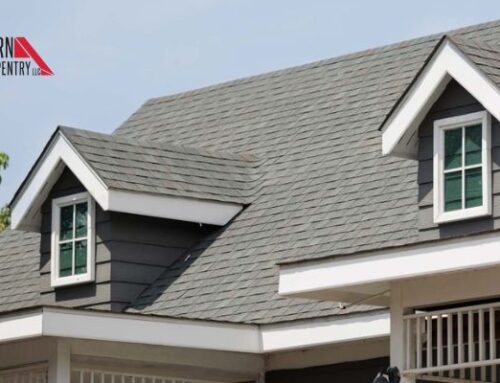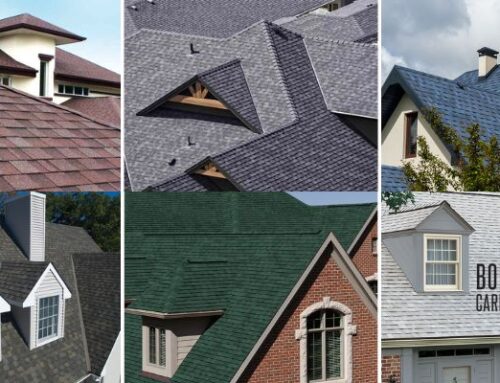With the winter season, you can expect cold temperatures, along with ice and snow. Sometimes ice and snow can damage your roof and you might need to contact a roofing contractor to check for/fix any damages.
It’s important to know how ice and snow can impact your roof.
Ice Dams
Ice dams are one of the biggest potential problems of having ice and snow on your roof. Snow falls on your roof and accumulates there. In heated buildings with sloped roofs or when outdoor temperatures suddenly go up above the freezing point, the snow will start to melt. When this happens, it will then start to flow to the edge of the roof. Once it reaches the edge where the temperatures are below the freezing point, it freezes once again. This buildup leads to the formation of an ice dam. The presence of ice dams can facilitate a leaky roof. This is because the ice dam causes a blockage on the drainage path. Water that comes flowing behind it will not be able to pass. This will force the water to look for an alternative path– through your roof. As a result, your roof may start leaking and the interior structures of your home experience damages.
Gutter Damage
Gutter damage is another possibility when snow and ice get on your roof. With time, the ice and snow on your roof will begin to melt and start flowing down the roof. However, it has to pass through the gutters before reaching the ground. If it is unable to flow properly due to a pile-up of debris or the presence of an ice dam, it may eventually freeze up again. This, together with the ice dams, will put a lot of weight on the gutters. This weight can eventually pull the gutter away from the roof leading to serious gutter damage.
Stress
A single snowflake on its own is pretty lightweight. Initially, the snow and ice falling on your roof may not be that big of a deal. However, as it continues to snow, more and more of it accumulates on your roof. The snow and ice on your roof can become extra heavy over the span of a couple hours. This build-up is dangerous as it puts a lot of stress on your roof. Flat roofs are more susceptible to this as they do not give snow the chance to slide off the roof as it would on a slanted roof. This additional weight can cause damages to your roof such as cracks, leaks, a bowed ceiling, or even a collapse.
The Freeze And Thaw Cycle
Your roof may have existing cracks as it starts to snow. When the snow on your roof melts, water may find its way through the cracks and leak into your home. A crack in your roof can also be made worse in the process.
If the water seeping into a crack does not go all the way through, it may end up freezing there when the temperatures drop again. When this occurs, it pulls the crack further apart causing it to expand. This forms a vicious cycle as the crack continues to get worse each time.
Damage During Snow Removal
Some homeowners attempt to clear snow off their roofs. When using tools such as shovels, they may end up using too much force, damaging the shingles, or piercing the waterproof membrane on the roof while at it. Trying to melt the snow using chemicals such as rock salt and calcium chloride can also have negative effects.
Summary:
Most roofs face the risk of damages from ice and snow during the winter season. Knowing this, you should hire a roofing contractor for snow removal services as well as a roof inspection. This way, any repairs will be done early enough, preventing surprises in the future.






